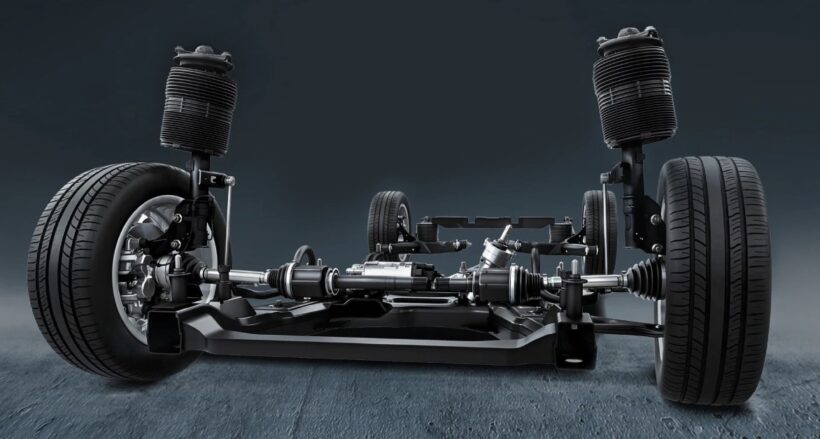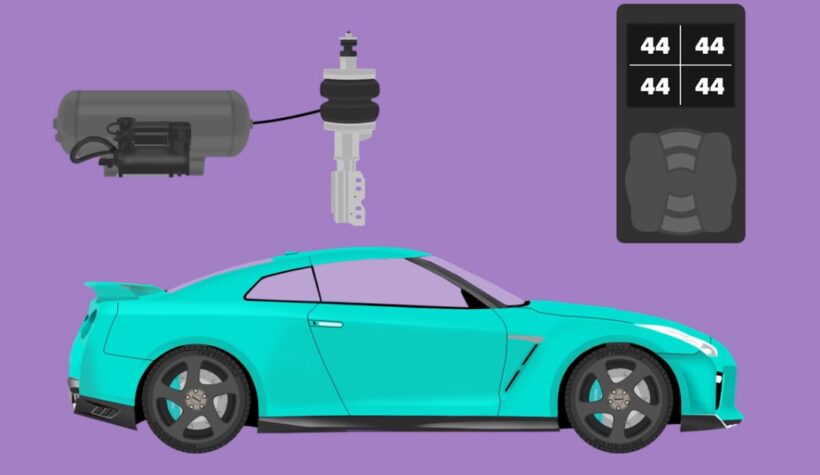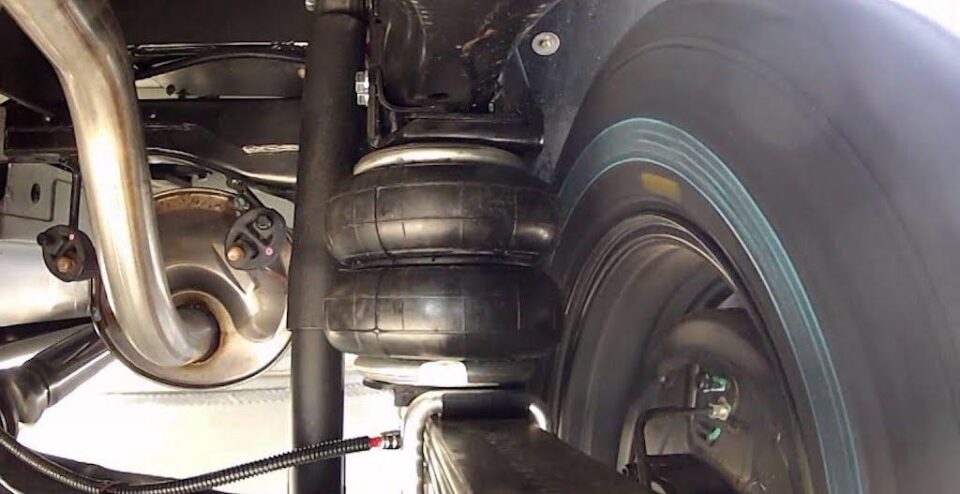Car air suspension, a technology once reserved for luxury vehicles and heavy-duty trucks, is becoming increasingly common in everyday cars. This technology replaces traditional metal springs with air bags or struts, allowing for a more adjustable and often smoother ride. The question arises: is car air suspension suitable for daily driving? This blog post delves into the intricacies of these devices, weighing its advantages and drawbacks to help drivers make informed decisions about their vehicles.
What is Car Air Suspension?

Car air suspension is a type of vehicle suspension powered by an electric or engine-driven pump or compressor. This compressor pumps it into flexible bellows, usually made from textile-reinforced rubber. The air pressure inflates the bellows, raising the chassis from the axle. Originally designed for heavy vehicles like buses and trucks, air suspension aims to provide a smooth and constant ride quality.
In simpler terms, think of it as a balloon that inflates or deflates to adjust the car’s height and cushion the ride. Unlike traditional suspensions that use metal springs to absorb impacts, air suspension uses pressure, which is more easily adjustable. This adjustability allows for a customized driving experience, tailored to the needs of the driver and the conditions of the road.
Pros of Car Air Suspension
Smoother Ride
One of the most significant advantages of air suspension is the enhanced ride quality. These systems can absorb road bumps and imperfections, delivering a smooth and comfortable ride. This is especially beneficial for long drives where road fatigue can be an issue.
Adjustable Height
Air suspension allows for adjustable ride height. This feature is particularly useful for navigating roads with varying conditions. For example, you can raise your vehicle’s height when driving on rough terrains and lower it for improved stability and efficiency on highways.
Load Leveling
Another advantage is load leveling. These systems can adjust to maintain a level stance regardless of load. This is crucial for vehicles that carry varying weights, ensuring stability and control at all times.
Improved Towing
For vehicles used in towing, it is beneficial. It can adjust to compensate for the added weight of a trailer, providing better control and stability.
Cons of Car Air Suspension

Maintenance Costs
Air suspension systems can be more expensive to maintain than traditional suspensions. The complexity of the system means that repairs can be costly and might require specialized knowledge.
Reliability Issues
They are known for their susceptibility to leaks and other failures. These systems, especially in older models, can be less reliable than their conventional counterparts.
Complexity
The complexity of air suspension systems can be a drawback. More components mean more potential points of failure, from compressors to electronic controls.
Performance in Extreme Weather
In extremely cold weather, air suspension systems can experience reduced performance. The air can contract in cold temperatures, affecting the suspension’s ability to maintain ride height and comfort.
Comfort and Ride Quality
Air suspension significantly enhances comfort during daily driving. The system’s ability to adjust to different road conditions means that it can provide a consistently smooth ride, regardless of the terrain. The suspension absorbs bumps and dips in the road, reducing the impact felt inside the cabin.
This adjustability is not just about comfort; it also contributes to safety. A smoother ride means better control and less fatigue for the driver, particularly on long journeys.
Additionally, they can be tailored to individual preferences. Some systems allow drivers to choose between a softer, more comfortable ride or a firmer setting for a sportier feel. This adaptability makes these devices an attractive option for a wide range of drivers and driving conditions.
Handling and Performance
The impact of air suspension on a car’s handling and performance is a mix of positive and negative aspects. On the positive side, the ability to adjust the suspension can lead to improved handling characteristics. For instance, lowering the vehicle’s height at higher speeds can reduce aerodynamic drag and improve stability.
However, there are potential downsides. The added weight of this system can affect the car’s agility and responsiveness. Also, if the system fails, it can dramatically alter the car’s handling, potentially leading to unsafe driving conditions.
Maintenance and Costs

Maintaining an air suspension system requires attention and, occasionally, a significant financial investment. Regular checks are essential to ensure the system is functioning correctly and to catch any issues early. Repairs can be costly, as parts like air compressors and air bags are more expensive than traditional suspension components.
Owners should also consider the potential need for calibration and software updates, especially in modern vehicles with integrated electronic systems. These updates can sometimes require specialist equipment and knowledge.
Reliability and Durability
When it comes to daily driving, the reliability of air suspension can vary. Newer models and high-end vehicles often come with advanced systems that offer better reliability than older or entry-level versions. However, like any component, this systems can wear out and fail, especially if not properly maintained.
The durability of air suspension systems has improved over the years. However, they still may not match the lifespan of traditional spring suspensions. Regular use, especially under harsh conditions, can accelerate wear and tear.
Adjustability and Customization
One of the most appealing aspects of air suspension is its adjustability and potential for customization. Drivers can tailor their vehicle’s ride height and suspension settings to suit their driving style and the road conditions. This feature is particularly beneficial for enthusiasts who want a customized driving experience or for those who frequently drive in varying conditions.
Common Issues and Repairs
Common issues with air suspension include air leaks, compressor failures, and sensor malfunctions. These problems can lead to a decrease in ride quality and even a complete system failure. Repair costs can vary but tend to be higher than for traditional suspension systems, due to the complexity and specialized parts required.
Real-Life Experiences
Many drivers with air suspension report a significant improvement in their daily driving experience. The enhanced comfort and adaptability to different road conditions are frequently praised. However, some also share experiences with reliability issues and costly repairs, highlighting the importance of regular maintenance and choosing a reputable system.
Conclusion

Car air suspension offers a blend of advantages and disadvantages for daily driving. While it provides improved comfort, adjustability, and a smoother ride, it also brings concerns about reliability, complexity, and maintenance costs. Drivers considering these devices should weigh these factors against their personal needs and driving conditions to make an informed decision.

